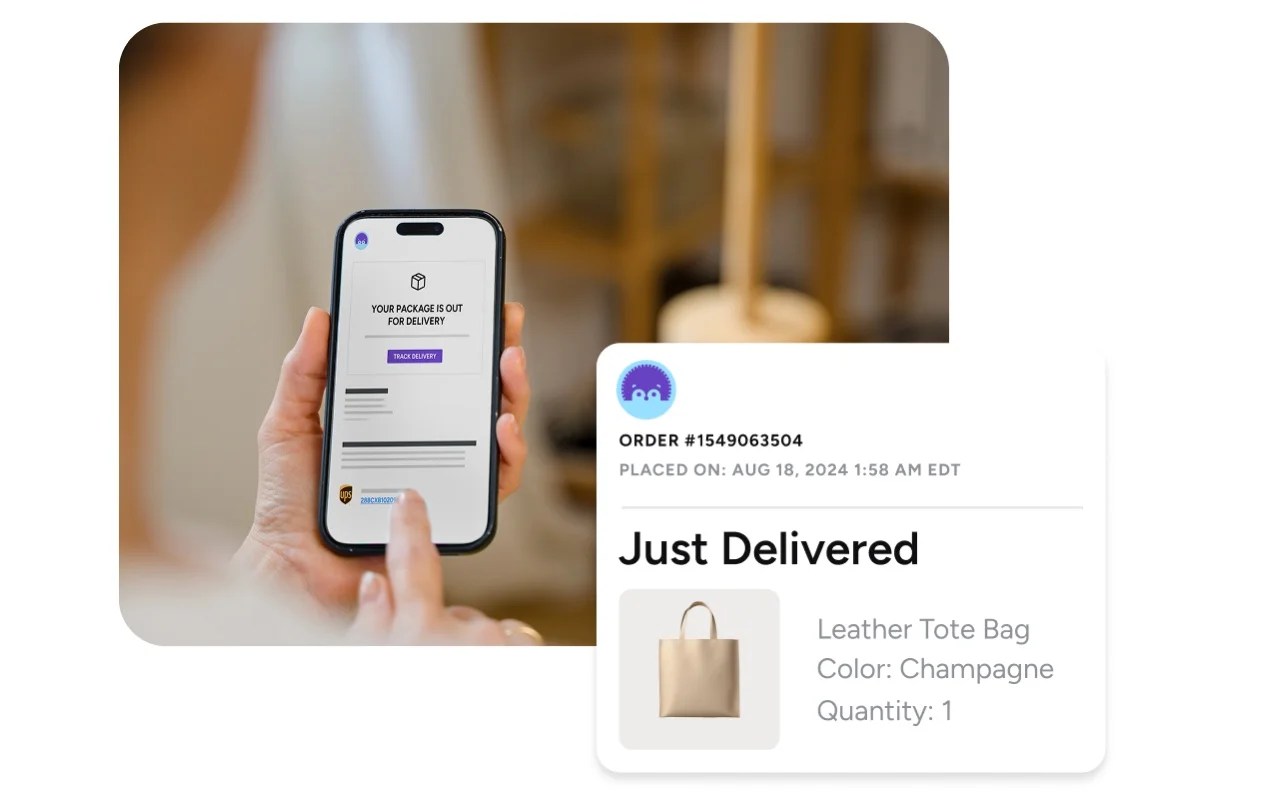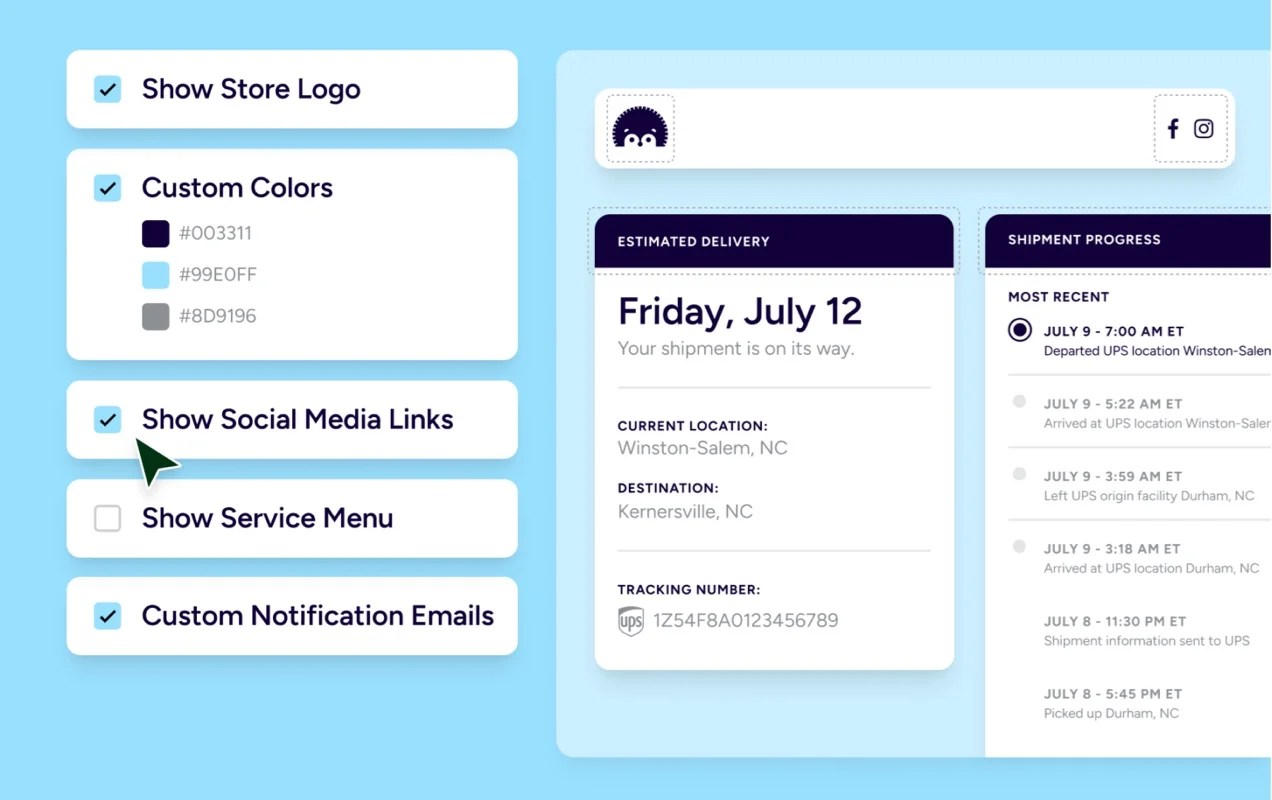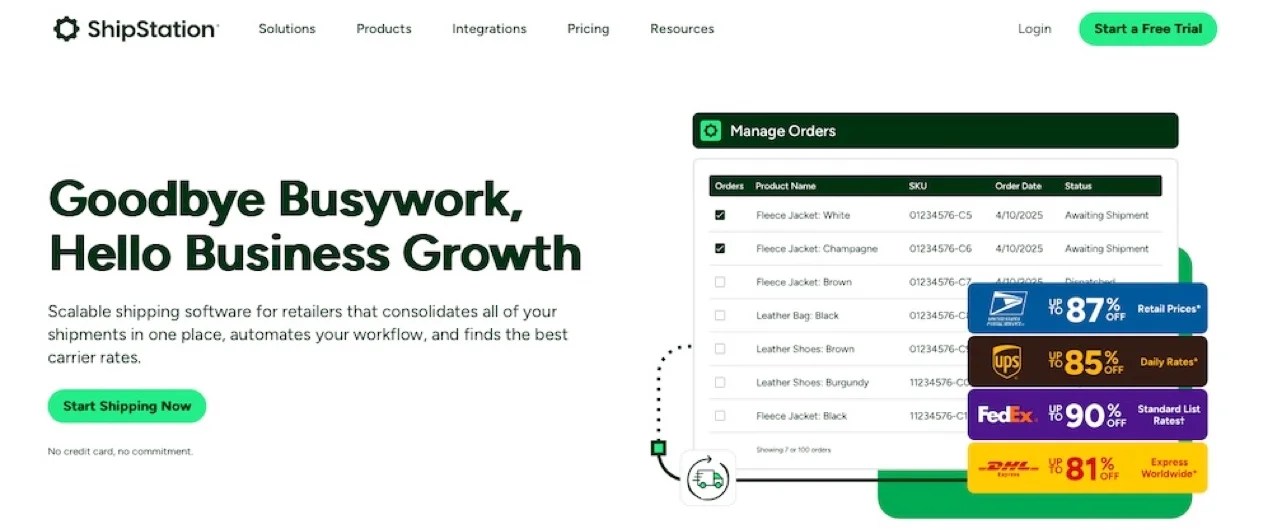Peak shopping seasons like Black Friday/Cyber Monday, Valentine’s Day, and the summertime can either propel your revenue forward or bring down your entire fiscal year based, in part, on your shipping strategy. Consumers expect fast (and often free) delivery, and that expectation adds stress to merchants striving to balance cost management with a quality customer experience.
And the data backs this up. Around 39% of online shoppers abandon their carts due to unexpected or high shipping fees, making it the single biggest drag on conversions.
In this post, we’ll explain how to create a shipping strategy that’s a win for both your business and your customers — one that’s smart, adaptive, and transparent. We’ll compare several shipping options, review factors that affect shipping costs, and show you how to exceed shopper expectations.
Costs matter, but during busy shopping seasons, so does the customer experience. Shoppers expect transparency, convenience, and control during every step of the shipping process. Meeting those expectations reduces “Where’s my order?” emails and encourages people to shop with you again.
Here are a few ways to keep customers happy with your shipping strategy:
Send shipping notifications
Clear, automated updates let customers know when their order is received, shipped, and delivered. Proactive communication reassures shoppers that their items are on the way, even when seasonal demand means slightly longer processing times.
For example, you can send automated emails when an order is shipped, expected to arrive, out for delivery, and delivered. This not only keeps customers reassured and engaged throughout the delivery process but also reduces the number of “where’s my order?” inquiries merchants typically receive. With automation tools on a platform like ShipStation, your business can save valuable time on manual communication, while your customers enjoy timely, transparent updates that strengthen trust and loyalty.
Enable order tracking
Customers want visibility after checkout. Real-time tracking links reduce anxiety, cut down on support tickets, and create opportunities for branded touchpoints. After all, tracking emails often get some of the highest open rates.


Be transparent about customs
International shoppers expect a great experience, but surprise duties and unclear customs processes can sour their transaction. Being upfront about customs fees and using tools that automatically generate correct documentation go a long way towards smoother delivery. This is especially relevant for businesses importing or shipping to the US with uncertainty around the recent tariff changes. Read this post to learn more.
Make returns simple
While product returns are inevitable, when handled the right way, they can actually strengthen customer loyalty. Prepaid return labels create a smoother experience for customers and automated return and refund processes free up your team’s time. More importantly, a seamless return builds trust, showing customers that your brand stands behind its products and cares about their experience.
Plan for fulfillment delays
Even the most efficient operations can run into delays during peak shopping seasons. By clearly communicating realistic shipping timelines, you set the right expectations from the beginning. Customers are typically far more forgiving when they know what to expect, and honest communication helps maintain their trust in the long run.
Before you can manage costs during high-volume seasons, you need to understand what drives them. Small changes in package dimensions, materials, or processes add up quickly when you’re shipping hundreds of orders a day.
Weight and size
Carriers use dimensional weight pricing, which means both a package’s size and weight affect the final shipping rate. A smaller, heavier box might actually cost less than a larger, lightweight one. If your catalog has consistent product dimensions, flat rates may be the best option, but if you ship a wide variety of product types, you may need a more flexible approach.
Packaging and packing materials
Specialty boxes, padding, and insulated packaging protect your products, but they also increase shipping costs. The challenge is finding the right balance, choosing packaging that minimizes damage without excessively inflating expenses. Especially during peak seasons, cutting corners can backfire, leading to more costly returns, replacements, and frustrated customers.
Human resources
Labor adds up quickly. Someone has to print labels, assemble packages, and manage pickups or drop-offs. During surges, you may need to hire seasonal staff, which drives costs even higher. Automating steps like label creation and batch processing is one way to reduce this workload and keep costs predictable.
Pro tip: Compare rates across providers
The carrier you choose has a major impact on shipping costs. Rates can vary dramatically depending on distance, delivery speed, and package size. That’s exactly why rate shopping is so important, especially during high-demand seasons when every dollar counts.
A platform like ShipStation gives WooCommerce merchants access to multiple carriers — including USPS, FedEx, and UPS — in a single dashboard. This enables you to choose the fastest or most economical option for each order without slowing down fulfillment.

Rate shopping is one of the simplest ways to protect margins while still meeting customer expectations. Here’s how to compare:
- Review order patterns: Start by identifying your most common package sizes, weights, and destinations. Comparing rates for the orders you actually ship gives you more useful insights than looking at generic examples.
- Match delivery speed with customer needs: Not every order needs to arrive in two days. Decide when slower, less expensive options are acceptable and when speed is worth the extra cost, especially during holidays when timing is critical.
- Compare carriers side by side: USPS, FedEx, UPS, and regional carriers all price differently based on weight, zone, and service level. What looks affordable for one shipment might not be the best option for another.
- Account for seasonal surcharges: During peak selling months, carriers often add temporary fees. Always check the final landed cost, not just the base rate.
- Automate the comparison step: Logging into multiple carrier websites wastes valuable time during a rush. A tool like ShipStation brings all your carriers into one dashboard, showing you real-time rates and estimated delivery speeds so you can make the best call every time.
The goal here is to turn your rate comparison tasks into a structured workflow. When you plan ahead, you reduce costs, maintain transparency with customers, and keep fulfillment moving smoothly in high-pressure seasons.
Margins are the difference between what you earn from a sale and what it costs to fulfill it. Every package has inherent costs for packaging, production, and shipping — and how you balance those costs impacts both customer satisfaction and overall profitability.
If your product costs $20 to make, $5 to package securely, and $8 to ship, that’s $33 for the cost of goods sold (COGS). If you’re aiming for a 40% margin, you’d need to price the item at about $46.20. Charge $38.20 plus $8 shipping, and you’re on target. Absorb shipping into the product price to offer “free” shipping, and your margin drops closer to 15%.
Neither is right or wrong. It comes down to what your customers expect and what your margins can realistically support. These are the main strategies:
Five cost strategies for ecommerce shipping
1. Live rates
Live, real-time shipping calculations show customers the carrier’s exact cost based on weight, dimensions, and destination. This adds transparency at checkout and reduces sticker shock, since buyers know they’re paying the true shipping cost, not an inflated flat fee.
ShipStation, for example, supports real-time rate integration, so you can present accurate options without having to manually update anything.

2. Table rates
Table rates use rules you define — like order weight, size, destination, or total value — to set shipping costs. They’re especially useful if your catalog varies widely, and you can make them as complex as you need.
For instance, you might charge $5 for packages under eight pounds, $10 for anything heavier, or offer free shipping only to certain states. This helps you account for a wide variety of product types and buyer personas.
3. Flat rates
Flat rate shipping is straightforward: you charge one price for all orders, regardless of weight or size. Customers love the predictability and this is a great option if your products are all similar sizes.
The risk, of course, is over- or undercharging, but during high-volume seasons, the simplicity of a “Shipping is always $5” message reduces friction and increases conversions.
4. Free shipping
Free shipping is still the biggest incentive for buyers: 93% of shoppers purchase more products if free shipping is available and 58% add more items to their carts just to qualify for free shipping.
The key is folding the cost into your pricing strategy so you’re not giving away your profits. Many merchants set free shipping thresholds (“Free shipping over $50”), which protects margins and encourages upsells.

Scratch Pet Food, an Australian dog food company that uses all real ingredients, sells food subscriptions that include free shipping to all customers in Australia. Because they generate recurring income from loyal customers, they can safely afford free shipping knowing that the benefits outweigh any potential downsides.
5. A strategic combination of methods
The most flexible approach is often a mix. Maybe you offer flat rate shipping on small orders, free shipping above a set cart value, and live rates for international or expedited options. During peak seasons, this hybrid approach lets you compete on convenience while still protecting your margins.
The right mix depends on your catalog, your customer base, and your margin goals. But whichever strategy you choose, tools like ShipStation mean that you don’t have to guess. By automating rate lookups, syncing in real time, and applying rules at scale, you can keep shipping in line with profitability, even as order volumes spike.
A smooth delivery is more than just the final step of a sale. It’s a chance to leave a lasting impression. The way you handle shipping can turn a first-time buyer into a loyal, long-term customer. Here are some ways you can delight your buyers:
1. Create branded labels and tracking pages
Every interaction with customers is an opportunity to reinforce your brand. Branded labels and custom tracking pages keep your store top of mind, so shoppers feel connected from the moment they receive a shipping confirmation to the time their package arrives.

2. Set up proactive alerts and reports
Delays are inevitable, especially during the busy season. What sets strong brands apart is how they respond. Merchant-facing alerts and reporting tools let you identify potential issues early, so you can address them before they affect customers.
3. Maintain consistency across channels
Customers expect the same, seamless experience whether they order on your WooCommerce store, Amazon, Walmart, or Etsy. Centralized shipping tools sync fulfillment across all of your channels, so you don’t have to worry about inconsistent delivery times, labels, or tracking.
4. If it’s not free, make it fast
Not every business can afford to offer free shipping on every order. But faster shipping almost always boosts satisfaction. Automating backend tasks like label creation, batching, and routing with tools like ShipStation make same-day or next-day fulfillment realistic.
In competitive niches, going a step further on shipping often costs less than winning a new customer. Exceed expectations here, and you’re investing in loyalty that pays off long after a seasonal rush is over.
High-volume seasons overwhelm even the most organized of merchants. Manual workflows that feel manageable in the spring suddenly collapse under the weight of holiday or seasonal order increases, but automation makes all the difference.
With ShipStation for WooCommerce, you can:
- Save time with automation: Batch processing, auto-routing, and customizable shipping rules let you process hundreds of orders a day without extra staff.
- Stay error-free under pressure: Real-time syncing between WooCommerce and ShipStation keeps inventory, orders, and shipping data aligned, so you spend less time fixing mistakes and more time fulfilling sales.
- Deliver smarter at the best rates: Multi-carrier support gives you access to the most cost-effective and reliable delivery options for every order.
It doesn’t matter if you’re shipping 50 orders or 5,000. ShipStation scales with your business, helping you protect margins, meet customer expectations, and turn seasonal sales into long-term loyalty.
This season, make shipping your easiest win.

About
Laura Johnson
Laura is the product lead for Woo Shipping. When not shipping product updates, she enjoys spending time with her family in sunny Florida.